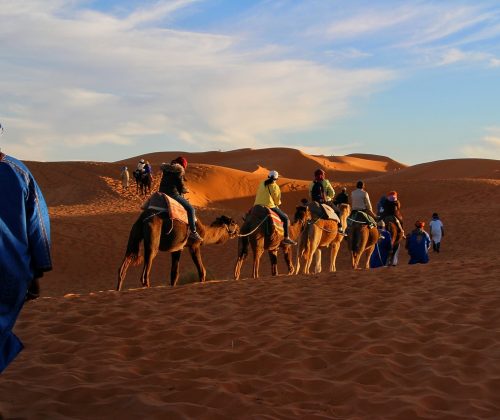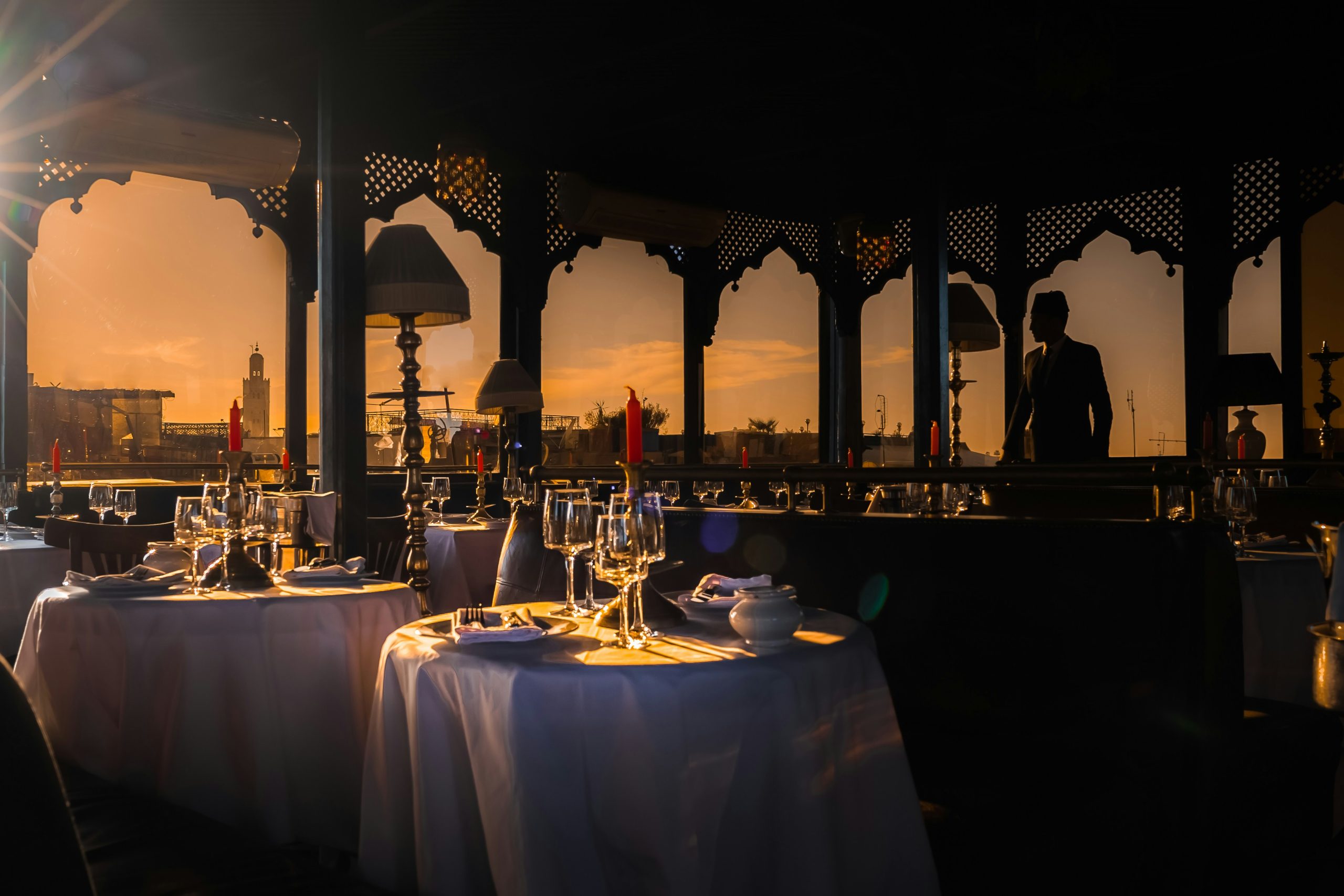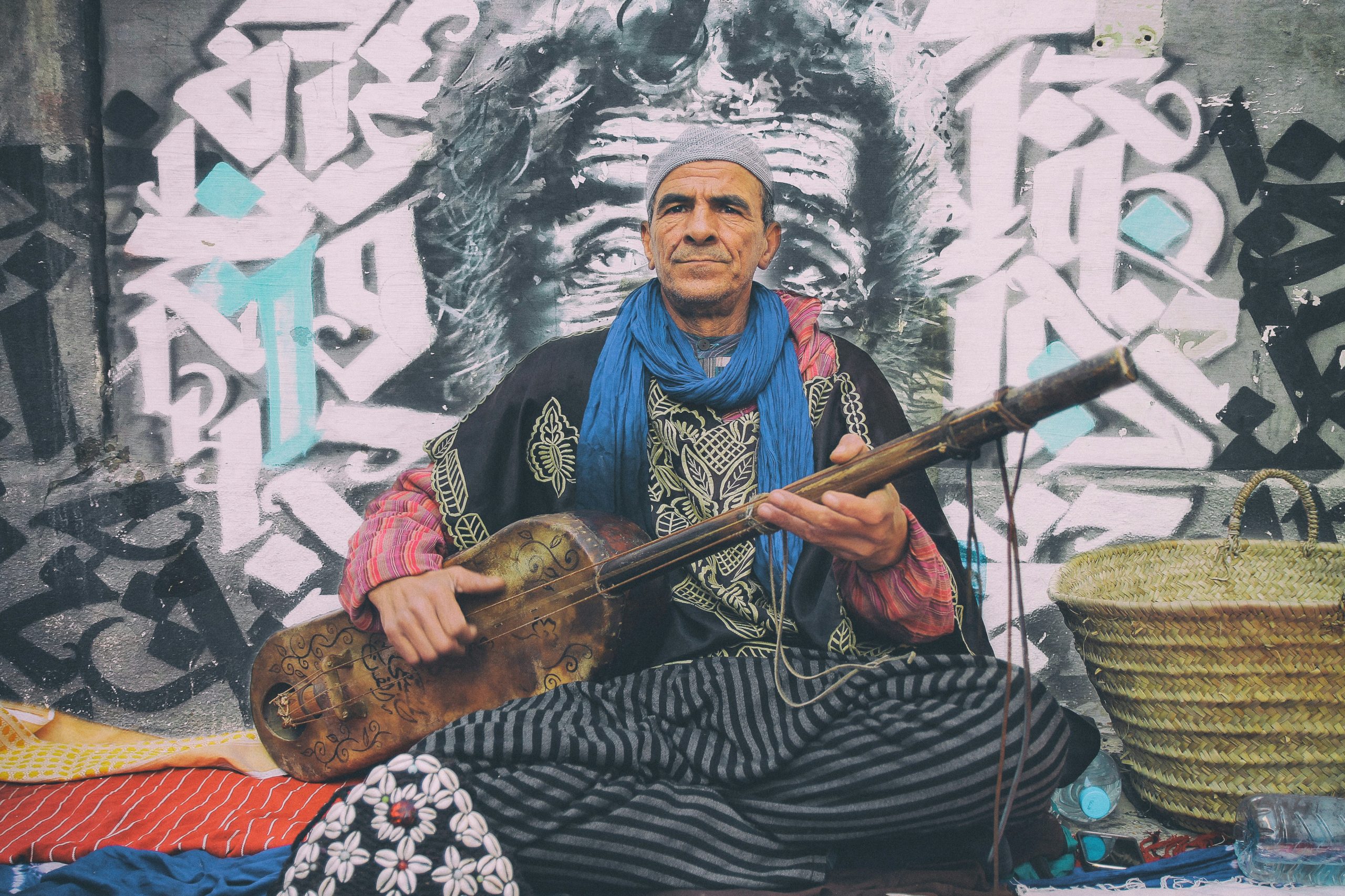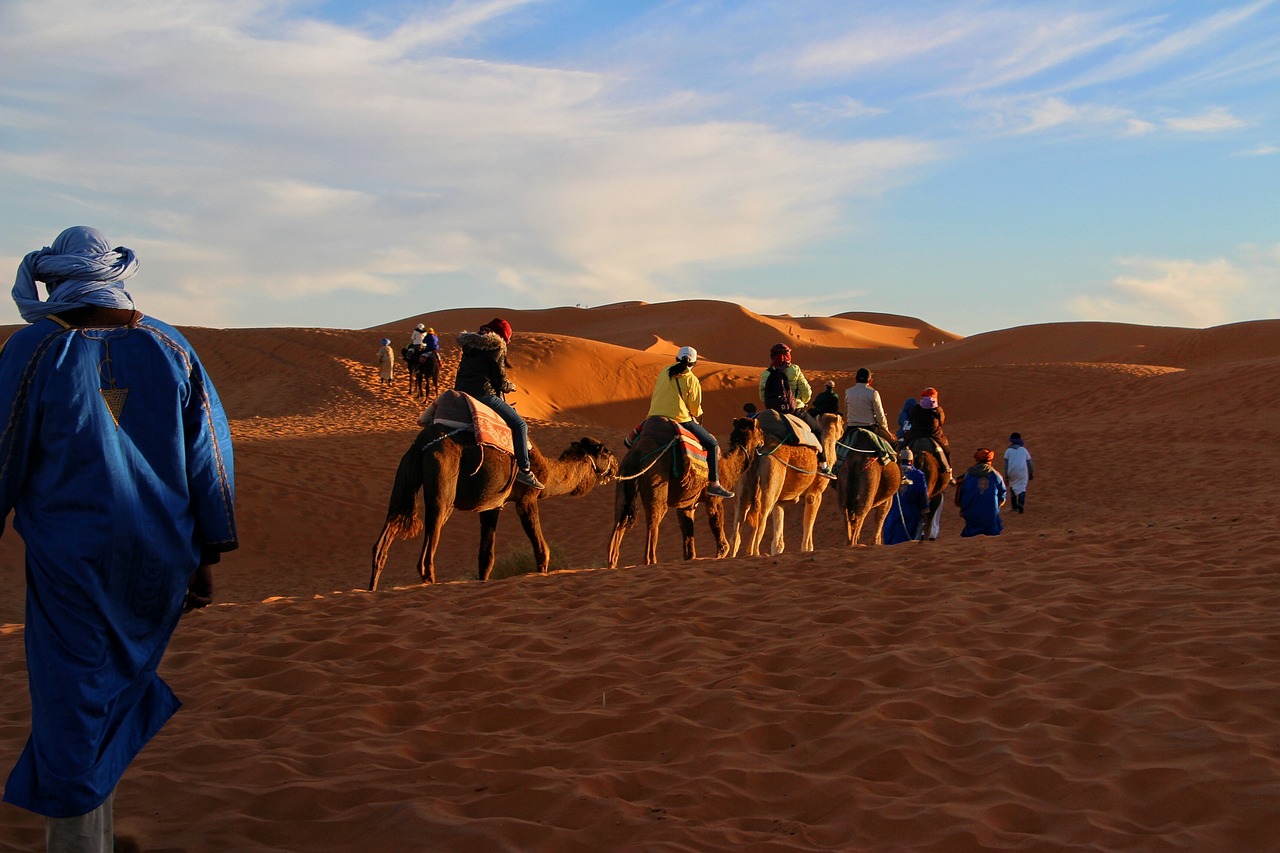
Top 10 Reasons to Visit Morocco
There may come a point when you must decide which of the wonderful locations throughout the world is best for you to visit.
More than 10 million tourists travel to Morocco annually for vacations, attracted by the country’s special location at the crossroads of the East and the West, which has given it a vibrant and diverse culture.
However, we’re not afraid to let you know that Morocco is the perfect destination if you’re looking for a trip that combines adventure, culture, history, and the great outdoors.
This diverse nation is home to magnificent palaces, fascinating museums, delectable cuisine, and vast stretches of breathtaking natural landscapes.
1. The four Imperial Cities
The four Imperial Cities of Morocco are Fez, Marrakech, Meknes, and Rabat, listed in order.
Fez
The first Moroccan capital was Fez. Between the 8th and 9th centuries, the Idrisid dynasty founded it. Since then, both the Wattasids and the Marinids have reigned from Fez. The city is renowned for its Islamic architecture and ancient Medina. To minimize floods, Fez was built on a slope and has small alleys. It is also one of the world’s largest metropolitan areas without automobiles. In this ancient city, mules and donkeys are the preferred form of transportation and have the right-of-way as they take supplies to the souk’s shops. For anyone interested in learning about Moroccan daily life as it was lived hundreds of years ago, Fez is a must-visit.
Marrakech
The Almoravids built their next Imperial City in Marrakech. The so-called “red city” is home to numerous architectural wonders, including as the Al Koutoubia Mosque, the Bahia, Badii Palace, the stunning Ibn Youssef Medersa, and the Dar Si Said Palace. One of the city’s magnificent locations not to be missed is the renowned Yves Saint Laurent, Majorelle Gardens, which were initially created by the French painter Jacques Majorelle. The most popular tourist destination in Morocco is now Marrakech, which draws visitors from all over the world. Marrakech won recognition as the world’s top destination on Trip Advisor in 2015.
Meknes
Under the reign of the fabled Sultan Moulay Ismail in the 17th century, Meknes was elevated to the status of Imperial City. This walled city still has palaces, several mosques, prisons, and gardens. The centerpiece is the royal stables, which formerly housed Sultan’s 12,000 horses as well as enough food for the populace to last a year. The Moulay Ismael Mausoleum, one of the few sacred sites that non-Muslims are permitted to see, is a must-see. Meknes is currently less busy than Marrakech, less well-known than Fez, and devoid of Rabat’s political clout, yet it is nonetheless a hidden gem for tourists.
Rabat
Although Rabat was designated an Imperial City in the 18th century, Fez continued to hold the title of capital of Morocco until 1912, when Rabat was given that honor by the French administration. The Hassan Tower, designed by Yacoub el Mansour, who also created the Giralda in Seville and the Koutoubia minaret in Marrakech, is Rabat’s most notable monument. The Mausoleum of Mohammed V, the current king’s grandfather, is the second noteworthy location. Rabat has developed into a major tourist and cultural hub as well as a UNESCO World Heritage Site.
2. Beautiful Architecture all Around the Country
Morocco’s many architectural splendors are a reflection of the country’s rich cultural heritage. Morocco is home to numerous magnificent structures that are worth admiring, including imposing mosques, classic riads, bright palaces, and beautiful centers of religious learning. Several structures have zellige, the typical tile work, as well as woodwork, plasterwork, and ornate carvings. The Hassan II Mosque in Casablanca, the Saadian Tombs in Marrakech, the Grand Mosque in Tangier, and the Mosque and University of al Quaraouiyine in Fes are a few of Morocco’s most stunning structures.
3. Sahara Desert
Morocco is a fantastic starting point for exploring the dunes of the Sahara Desert, which is one of the most beautiful places on Earth. Temperatures can rise as high as 115 degrees Fahrenheit, or 45 degrees Celsius, particularly in the summer (June to August). But, because it is a dry heat, the humidity is not too harsh. Just remember to pack your hat, sunscreen, sunglasses, and lightweight clothing.
Despite the heat, the Sahara is breathtakingly lovely. The horizon is covered in endless levels of soft, golden dunes, and it feels bizarre to ascend them. The air is so still and serene, and seeing the desert at sunrise or sunset is quite unforgettable. Because there is hardly any light pollution from civilization to obscure the stars, you will also see some incredible stars here.
4. Gorgeous beaches
1,200 kilometers of stunning coastline in Morocco go along the Atlantic and Mediterranean Seas. You can surf, swim, and sunbathe in several well-known coastal cities in Morocco, including Essaouira, Taghazout, Agadir, Safi, and Mirleft. At any time of year, the coast is fantastic; in the winter, the surf is pounding, and in the summer, the cool Atlantic Ocean feels wonderful on the hot, sweaty skin.
For couples looking for a romantic getaway or for families seeking some downtime, the region of Oualidia, El Jadida, and M’diq is perfect. Travelers who enjoy water sports, such as water skiing, kite surfing, and surfing, are in high demand at Essaouria, Sidi Kaouki, and Dakhla.
When you’re near the seaside, eat a lot of seafood, get ready for the strong ocean winds, and take in the laid-back atmosphere of the surf towns. You’ll experience some excellent Moroccan hospitality here because the locals are generally very kind and laid back.
5. Mountain ranges
The Atlas Mountains of Morocco are composed of the High Atlas, Middle Atlas, and Anti Atlas mountain ranges. Each offers a variety of hiking possibilities for hikers of all skill and experience levels. The High Atlas Mountains are home to Jbel Toubkal, the country’s tallest mountain. A lot of outdoor enthusiasts visit the imposing behemoth, which is easily reachable from Marrakesh, all year long. Outdoor experiences are also fantastic in the Rif Mountains, which are in the north of the nation and close to the blue city of Chefchaouen.
In Morocco’s highlands, visitors can go hiking, mountain biking, or horseback riding, as well as to Berber settlements, birdwatching, and native animals.
6. Accommodation for Every Budget
Morocco offers lodging options to meet all budgets, comfort levels, and adventure expectations, ranging from opulent five-star hotels to basic. Travelers can stay in riads and dars, which are traditional Moroccan lodgings, in the old Medinas of several cities. This is the ideal approach to living like a native. It is occasionally feasible to rent out the full building for a private stay with smaller homes.
In many main cities and seaside locations, including Tangier and Agadir, there are large resorts that offer a wide range of amenities, including swimming pools, on-site gyms, restaurants, pubs, and kids’ clubs.
7. Hospitality
To protect itself from any potential outside threats, Morocco upholds strong security measures at its airports, seaports, and border crossings. Travelers can feel very safe and secure in this calm, stable nation. The occasional small-time thief in Morocco is the greatest problem that visitors could run into.
Visitors should exercise the same level of caution they would at home or in any developing nation when traveling. This entails storing valuables in a safe at your hotel or riad or another accessible location that is inaccessible to the public. Women can travel freely and safely around the nation whether they are traveling alone or with a group of female companions. Wearing plain, modest attire is advised. There is no requirement to cover one’s face or head.
Morocco is a peaceful and multicultural nation. Jews, Arabs, Amazighs, and Europeans have coexisted peacefully for ages. The past’s diversity serves as a window into the present. All guests are welcome in Morocco, regardless of their political views, nationality, language, or religion. Moroccans pride themselves on their nation and culture and are kind, kind, and pleasant people. Moroccans are incredibly friendly and love to share food, tea, and casual chat with guests. Travelers rarely experience communication issues because the majority of Moroccans speak French and/or English.
8. Fantastic Shopping
Every major town and city in Morocco has at least one souk, while the majority of bigger communities have several. Traditional markets called souks are where locals go to buy a variety of goods. Souks may only be open on specific days of the week in some regions, whereas markets are held every day in other regions. The evocative colors, aromas, and overpowering sense of the unusual have made the souks something of a magnet for tourists. Negotiating is an integral component of visiting a souk. Spices, apparel, lamps, tea sets, musical instruments, and a variety of souvenirs are typical goods to browse and purchase in more touristy locations.
9. Delicious and Diverse Food
Morocco is well-recognized for its delicious cuisine. A traditional Moroccan kitchen is filled with spices, which give food a ton of flavor. Bread is a common food, and there are many varieties to choose from, including khobz, msemen, and baghrir.
The most often used meats in Moroccan cuisine are lamb, mutton, beef, and chicken. Coastal regions have an abundance of seafood and fish, with sardines being a particular favorite in Morocco. The most popular national foods are tagine and couscous. Some essential meals to try are brochettes, pastilla, bissara, harira, and more. Together with a huge selection of Moroccan pastries, you’ll also find a ton of sandwiches and pizzas.
10. Festivals
Year-round, Morocco hosts a plethora of music and cultural festivals. Parades, traditional storytelling, music, and dance are frequently separated. Going on vacation during a festival gives you a different perspective on the culture and people of the place. Many tourists schedule their trip to coincide with a festival so they can take in both the history and the performing arts as part of Morocco’s rich cultural heritage.
Mawazine in Rabat, Gnaoua World Music in Essaouira, Marrakech International Film Festival, World Sacred Music Festival in Fez, Imilchil Wedding Festival, and the Festival of Roses in Kalaat Mgouna are Moroccan festivals that have garnered attention in Europe and the United States.
Making your trip memorable is our main purpose as Morocco Travel Organizer Company. We constantly look for new experiences and tailor our efforts to the preferences of our clientele. Do not hesitate to contact us for making your trip to Morocco even more enjoyable and unforgettable!




